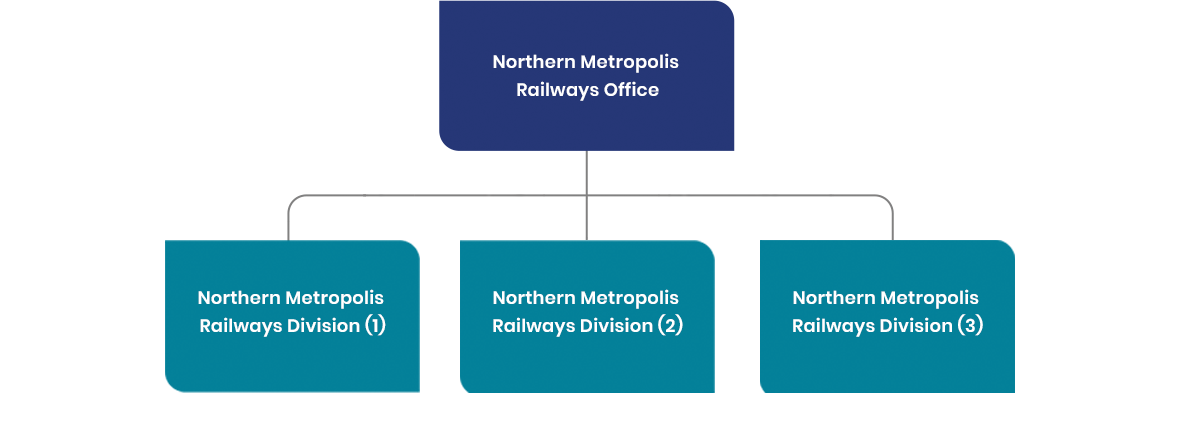Organisation
The Facts
The Highways Department which evolved from the Highways Office of the former Engineering Development Department was established on 1 June 1986. It is responsible for planning, design, construction and maintenance of the public road system. The department is also responsible for planning and facilitating the implementation of the railway networks. The department's annual expenditure for the financial year 2023-24 was HK$11,941.9 million, of which HK$1,677.7 million was for road and public lighting maintenance and HK$10,264.2 million for major highway construction. The budget for the 2024-25 financial year is HK$10,134.4 million.
The Highways Department has a staff establishment of close to 700 professionals and 1,800 staff in other grades. The department consists of the Headquarters; two Regional Offices, namely Urban and the New Territories Regions; a Major Works Project Management Office, a Railway Development Office and a Northern Metropolis Railways Office.
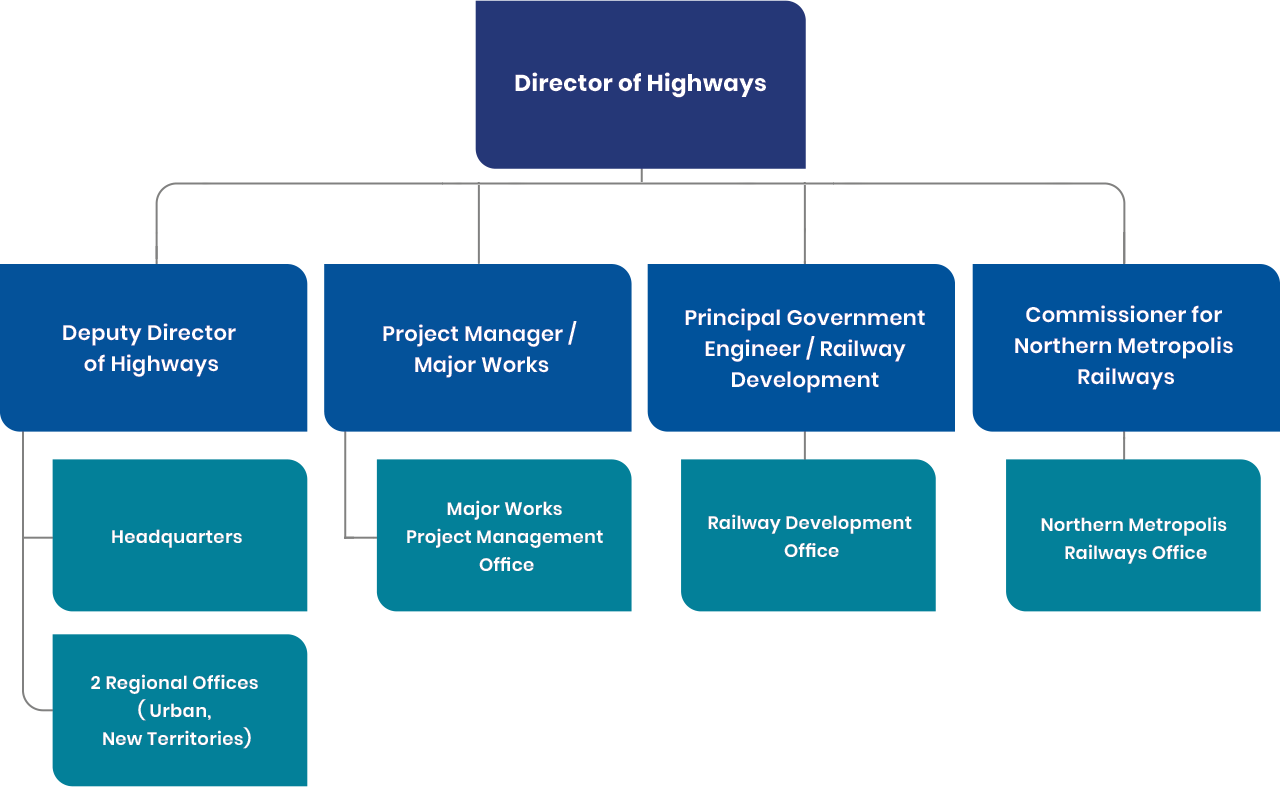
Headquarters
The Headquarters has 8 divisions and 11 units under 2 branches to provide specialist services to other offices of the department. The Development Branch consists of the Works Division, the Bridges and Structures Division, the Safety and Environmental Advisory Unit, the Geotechnical Advisory Unit, the Contract Advisory Unit and the Planning Unit. The Technical Branch consists of the Research and Development Division, the Lighting Division, the Landscape Division, the Survey Division, the Departmental Administration Division, the Accounting Services Division, the Maintenance Accounts and Quantity Surveying Unit, the Technical Services Unit, the Building Information Modelling Unit, the Quality Management Unit, the Media Communication Unit, the Public Relations Unit and the Training Services Unit.
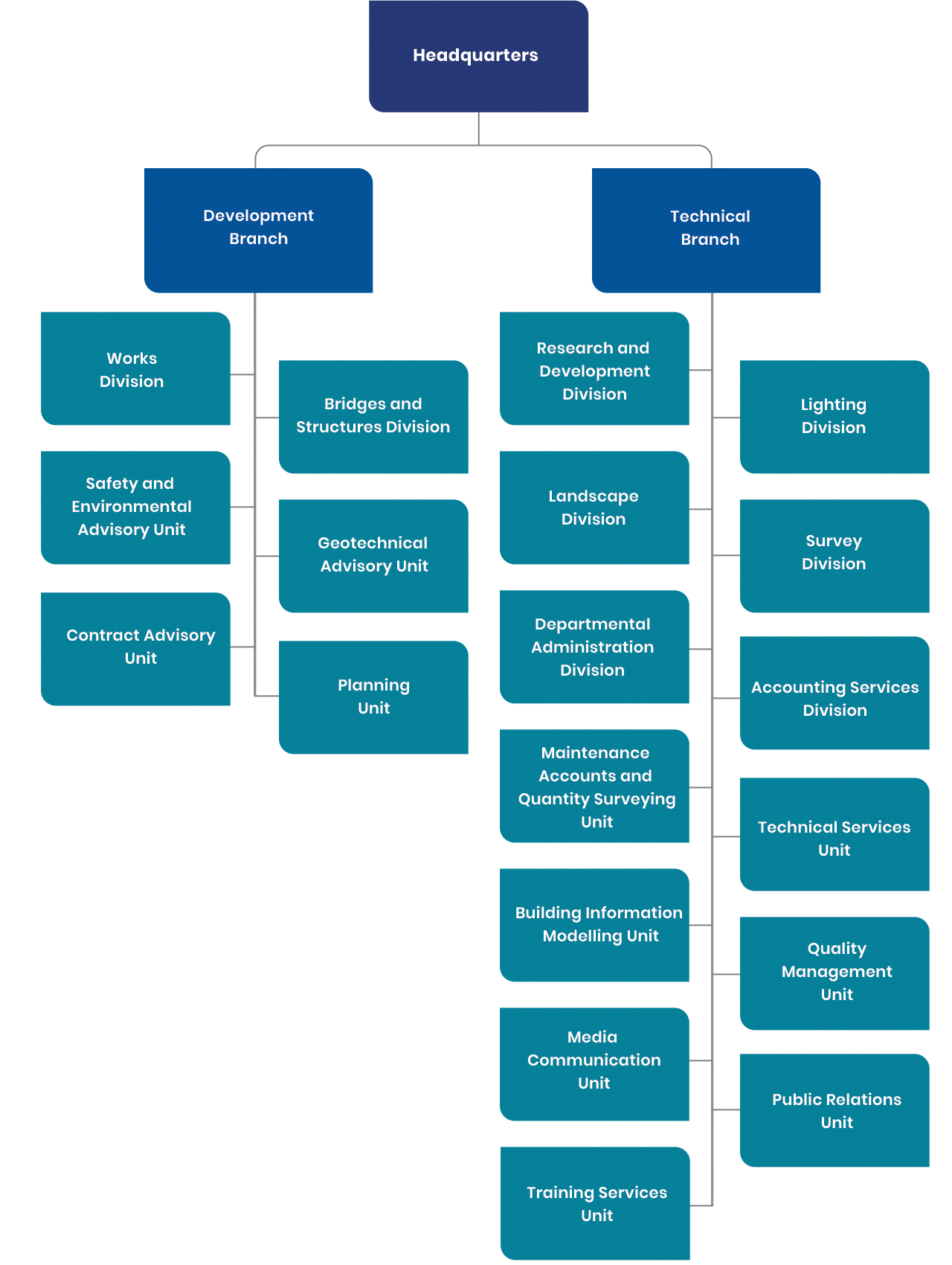
Two Regional Offices
The work of the two Regional Offices broadly falls into the following categories: district administration and highway maintenance. District administration involves giving advice on the public roads aspects on town plans, land allocations and leases, public and private sector development proposals. Highway maintenance comprises maintenance of public roads including highway structures, government road tunnels, road furniture, road drainage and roadside slopes and reconstruction or rehabilitation of road pavements. Other major areas of responsibility include co-ordination and control of openings on public roads, attendance to emergencies (such as typhoons, rainstorms, landslips and road subsidence) and minor improvements and beautification in relation to public roads.

Major Works Project Management Office
The Major Works Project Management Office is responsible for the implementation of major highway projects through in-house resources or consultants. The Central Kowloon Route, which is a major project under the portfolio of the office, commenced in end 2017. The Central Kowloon Route will be constructed as a 4.7 km long dual three-lane trunk road with a 3.9 km long tunnel linking Yau Ma Tei Interchange in West Kowloon with the road network on Kai Tak Development and Kowloon Bay in East Kowloon. Other projects under construction or with construction about to commence include Retrofitting of noise barriers on Po Lam Road North and Po Ning Road, Improvement works at Tsuen Tsing Interchange, Hiram's Highway Improvement Stage 2, and Retrofitting of barrier-free access facilities for existing footbridges, Elevated walkways and Subways under the Universal Accessibility Programme. Major projects under planning include Northern Metropolis Highway, Route 11 (section between Yuen Long and North Lantau), Tsing Yi – Lantau Link, Widening of Yuen Long Highway (section between Lam Tei and Tong Yan San Tsuen), Tuen Mun Bypass, Improvement of Lion Rock Tunnel, Widening of Tsuen Wan Road and the Associated Junction Improvement Works, Widening of T6 bridge of Tate’s Cairn Highway, Extension Works to Major Roads in Tuen Mun, Pedestrian Environment Improvement Schemes in Yuen Long and Mong Kok, Nim Wan Road (South), Upgrading of Nim Wan Road (North) and Deep Bay Road, Retrofitting of noise barriers on various road sections and the remaining retrofitting works items under the Universal Accessibility Programme.
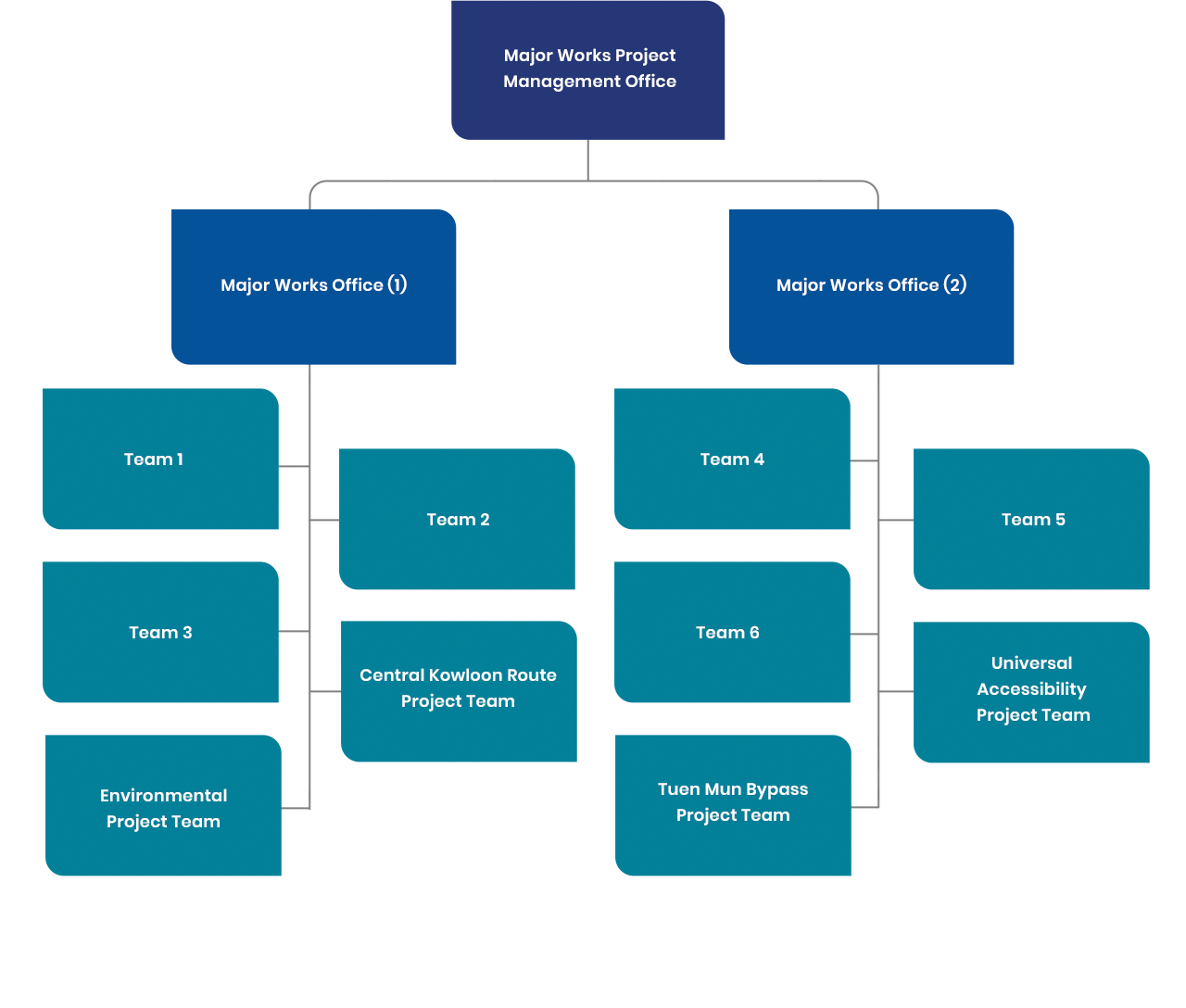
Railway Development Office
The Railway Development Office (RDO) is responsible for the planning of Hong Kong's future railway development to support population growth and economic development as well as the coordination and monitoring of railway projects under construction, including the Tung Chung Line Extension, Oyster Bay Station and Tuen Mun South Extension projects. After RDO completed the Strategic Study on Railways beyond 2030 to examine the long-term demand for railways in Hong Kong, the Government promulgated the Hong Kong Major Transport Infrastructure Development Blueprint (the Blueprint) in December 2023 to present the planning framework for the city's future transport infrastructure development and a forward-looking railway network developments, with a view to meeting Hong Kong's long-term transport and logistics demand up to 2046 and beyond. In addition to the railway development, RDO is actively taking forward the Smart and Green Mass Transit System in East Kowloon.
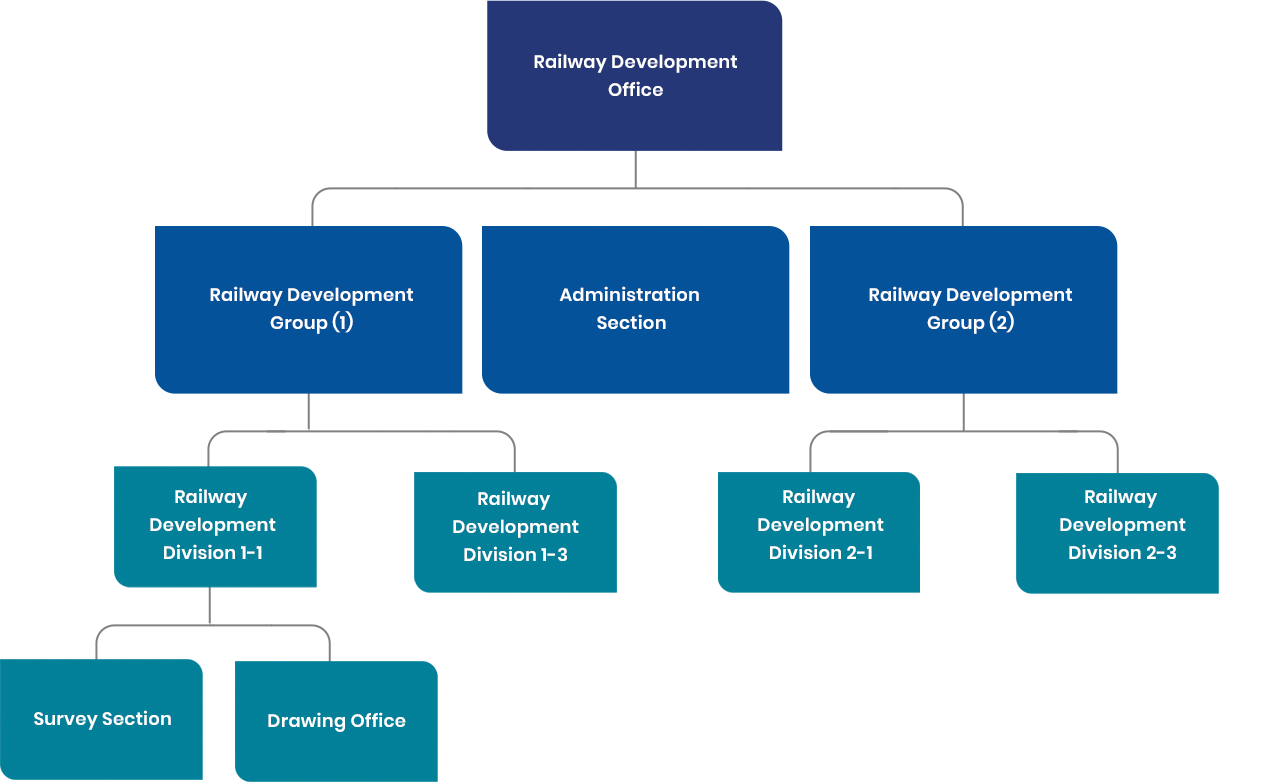
Northern Metropolis Railways Office
The Northern Metropolis Railways Office is responsible for coordinating and taking forward the railway projects related to the Northern Metropolis to support its development and connectivity with the Guangdong-Hong Kong-Macao Greater Bay Area, and to meet the transport need for the future development of Hong Kong.
